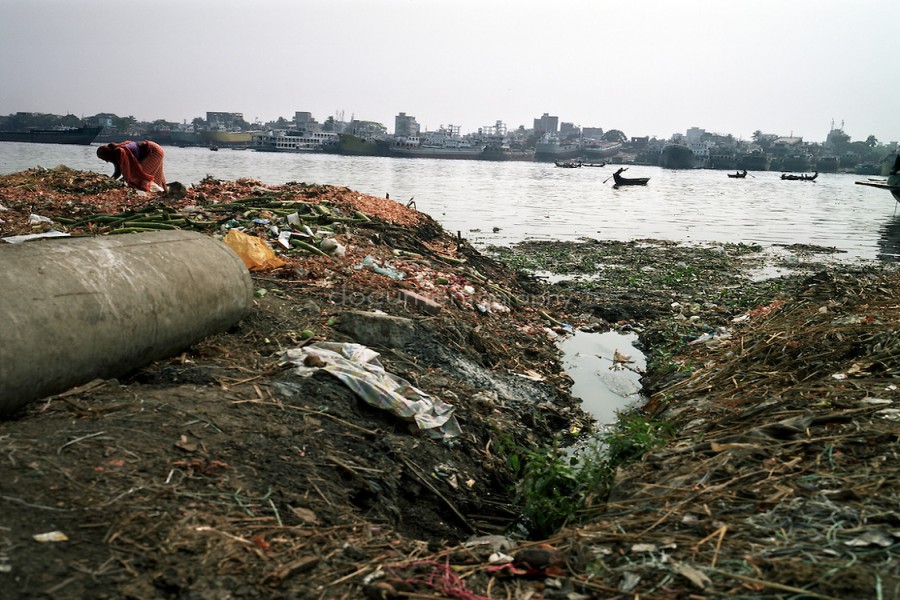Supplying safe water to the residents of Dhaka has become harder, especially in the dry season, due to the growing pollution in the Shitalakhya River and D&D canal, a study reveals.
In an impact evaluation study on Sayedabad Water Treatment Plant (Phase-2) Project, the Implementation, Monitoring and Evaluation Division (IMED) under the Ministry of Planning showed that around 1.5 million cubic metres of sewerage is dumped into the surrounding rivers of the densely-populated capital every day for lack of sufficient sanitation measures.
Apart from the Shitalakhya River, the pollution of other rivers like Turag, Buriganga and Balu is also increasing day by day, reports UNB.
In its report, the IMED has suggested necessary steps to prevent river pollution and thus ensure safe water to the city dwellers.
The report says around 80 per cent of the total sewerage come from industries every day while the rest from households, polluting the rivers severely.
The IMED suggested going for fast and effective inter-ministerial coordination to boost the capacity of the two water treatment plants at Sayedabad alongside ensuring an uninterrupted water supply system. There is also a need to take concerted efforts to check river pollution.
The study, conducted in various parts of the capital and analysing the survey findings, it was found that although the treated Water of Sayedabad Plant turned to be safe, it becomes polluted and contaminated at client level for various reasons.
The reasons include leakages in supply lines, illegal connections, not cleaning the underground and rooftop water reservoirs regularly, faults and displacement of water supply pipelines due to unplanned digging of roads by various service-providing agencies and using low-cost sub-standard fittings while having connections from the main supply lines to the buildings.
The families covered under the survey said the trend of waterborne diseases has declined compared to the past, but still diarrhoea turned out to be the most common disease. Diseases like diarrhoea, cholera and skin diseases are seen most among low-income community members while children, aged below five, are the most affected ones.
Due to these diseases, the average cost of family for medical expenses has climbed up to Tk 500 or more. Most of the interviewees of the survey said the flow of water varies in different seasons is dirty, and filthy water is often seen, especially in the dry season.
The officials related to the Survey said the water from the Sayedabad Water Treatment Plant is safe and standard, but water is polluted at the distribution and client levels.
The IMED suggested the Dhaka Wasa to strengthen its supervision alongside repairing the faulty lines and cutting off illegal connections.
The report also says inter-ministerial initiatives should have to be taken for checking pollution of the Shitalakhya, Buriganga and other surrounding rivers of the capital.
Besides, speedy steps are needed to implement the plans taken under the Master Plan for checking pollution of surrounding rivers of the capital and increase the navigability of those in line with the National River Protection Commission Act, 2013.
Among the major recommendations, the IMED said the Shitalakhya river banks should have to be immediately freed from encroachers with concerted efforts by the local administration, local public representatives and representatives of the civil society to maintain the capacity of the Water Treatment Plant. There is also a need to sever the connections of industrial sewage to the river and other sewerage lines.
The Sayedabad Water Treatment Plant (Phase 2) Project was implemented by Dhaka WASA spending Tk 11.4 billion and it helped ensure the supply of additional 225 MLD of water to the city dwellers to meet their growing demand.


